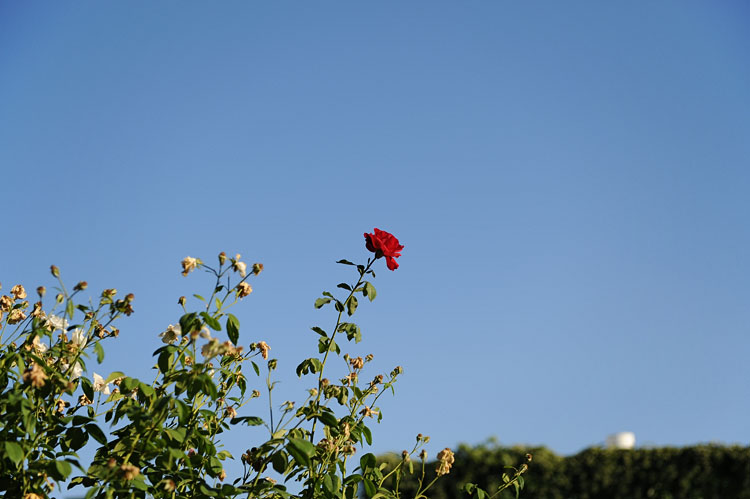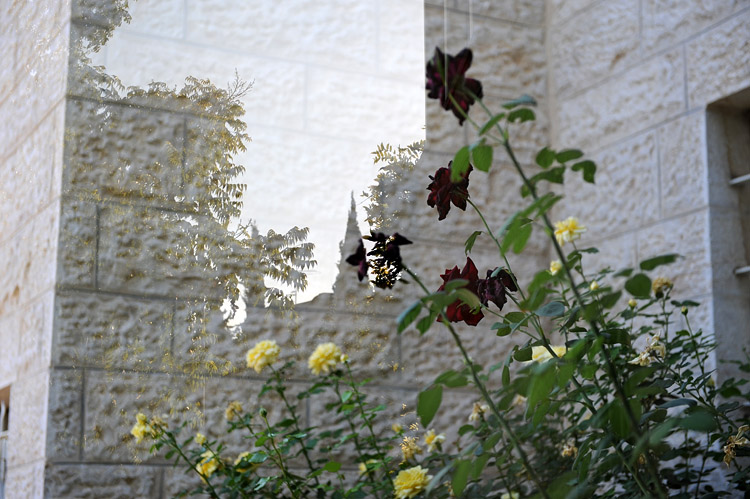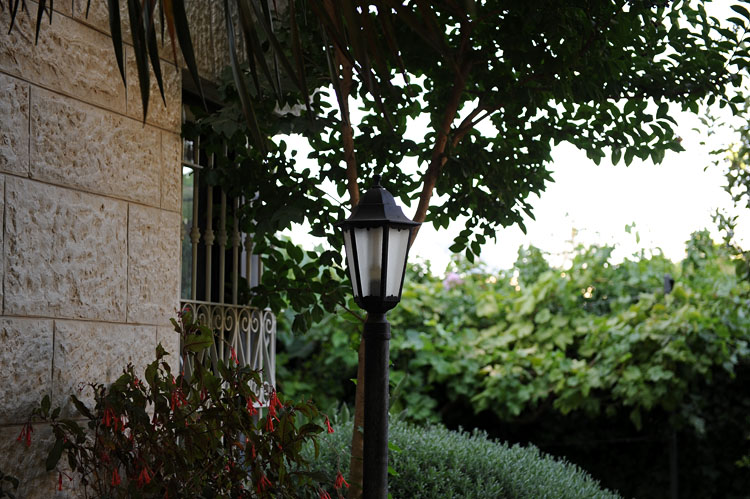Nikon's new baby was delivered to me today for testing, and the following are my first impressions. A more detailed test report will be issued later. At first sight, it is similar to the D300, but an in-depth observation reveals a few changes. Several commands have been moved, such as the light measuring method that is currently part of the AE-L/AF-L. The eyepiece is large and bright as in the D3 and has the same structure. Owners of the D3 and D300 will only need a moment to become familiar with the D700. It sits well in the hand, and those who say that a few grams do not matter compared to the D300 – are mistaken. The difference in weight is evident and cannot be disregarded. It's true that it is not the monstrous D3 in size and weight, but it weighs more than the D300. Some people would consider this an advantage – which keeps it stable, but others, who don't fancy carrying weights around their neck will not appreciate it. I can only say that after one adds the grip and a large battery its weight exceeds that of the D3. I will be able to check its battery life at a later date – it is the same battery that fits on the D200/D80/D300, the EN-EL3E. This battery provided over 1,000 pictures with the D300, and I doubt it will last any longer in the D700. Since the D700 is a combination of the D3 with the D300, the single (not double as in the D300) memory card was moved to the side and is inserted in the same manner as in the D80. The camera has a built-in flash which is strong and effective – and is missing in the D3 (and very useful in the D300) when not using an external flash. This is what probably dictated its special structure. The camera has a Live View feature similar to its predecessors, with the same rear screen and rubber seals. The menus are similar to those of the D3/D300 with some new additions, such as vignetting correction (darkening of the corners) that I have not tested yet, but it still does not have automatic identification of the lens, a level for leveling the camera, different LV states and the same methods of selecting color profiles and adding profiles. The camera responds amazingly quickly when pressing the shutter release button (I've checked it with the 24-70), but also with Nikon's old "wagon", the 60/2.8 lens focuses at a relatively high speed (same as the D3). There are several additional differences, but I prefer to save them for the next tests I perform. I ran the following test while setting almost all the features to their default values. I tested the quality of the color it produces at this state - and it is not different from the quality of color (SD mode) produced by the D3 and the D300:  | | Model: NIKON D700 Exposure Time: 1/2000sec F Number: 4 Max Aperture Value: 3 Focal Length: 70mm Exposure Program: Aperture priority Exposure Bias Value: 0 ISO Speed Ratings: 200 Metering Mode: Center Weighted Average White Balance: Auto white balance Flash: Flash did not fire Focal Length In 35mm Film: 70 Date Taken: 2008:08:04 18:06:42 Color Space: sRGB |
The multiple exposure state (two in this case) works well and it does appear as if Nikon fixed the algorithm of this operation slightly and it now presents perfect contrast mixing:  | | Model: NIKON D700 Exposure Time: 1/125sec F Number: 4 Max Aperture Value: 3 Focal Length: 70mm Exposure Program: Aperture priority Exposure Bias Value: 0 ISO Speed Ratings: 200 Metering Mode: Center Weighted Average White Balance: Auto white balance Flash: Flash did not fire Focal Length In 35mm Film: 70 Date Taken: 2008:08:04 18:08:56 Color Space: sRGB |
It is true that this is somewhat obscure, but it bothered me a little with the first firmware versions of the D3. I checked the light metering in the three measuring methods and was positively surprised with the matrix measurement that was improved by Nikon. The center-weighted measurement (a measuring circle of 12mm, almost the smallest available) quite missed the lamp post:  | | Model: NIKON D700 Exposure Time: 1/320sec F Number: 4 Max Aperture Value: 3 Focal Length: 70mm Exposure Program: Aperture priority Exposure Bias Value: 0 ISO Speed Ratings: 200 Metering Mode: Center Weighted Average White Balance: Auto white balance Flash: Flash did not fire Focal Length In 35mm Film: 70 Date Taken: 2008:08:04 18:09:57 Color Space: sRGB |
The spot measurement was accurate:  | | Model: NIKON D700 Exposure Time: 1/80sec F Number: 4 Max Aperture Value: 3 Focal Length: 70mm Exposure Program: Aperture priority Exposure Bias Value: 0 ISO Speed Ratings: 200 Metering Mode: Spot White Balance: Auto white balance Flash: Flash did not fire Focal Length In 35mm Film: 70 Date Taken: 2008:08:04 18:10:01 Color Space: sRGB |
Surprisingly, the matrix measurement was also accurate:  | | Model: NIKON D700 Exposure Time: 1/125sec F Number: 4 Max Aperture Value: 3 Focal Length: 70mm Exposure Program: Aperture priority Exposure Bias Value: 0 ISO Speed Ratings: 200 Metering Mode: Pattern White Balance: Auto white balance Flash: Flash did not fire Focal Length In 35mm Film: 70 Date Taken: 2008:08:04 18:10:08 Color Space: sRGB |
And in very complicated light conditions with a very bright back light! The remaining tests were the high iso tests. Here it behaves in a very similar way to the D3. Photos with iso 1,000 to 2,000 produce pictures that make it difficult, even when viewing at a zoom of 100%, to spot "snow" (noise) that is not in the darkest areas. The "snow" cleaning system was set to "Normal", and even so, I could not observe any deterioration in sharpness at the high iso states. The results are useful up to iso 6,400 without too much bother (in 6,400 it is best to use external cleaning methods, but the "snow" doesn't get in the way even without cleaning). At the high iso states, 12,800 and 25,600, the "snow" is evident, but after cleaning it on the computer (or by selecting the high level noise clean in the camera) the photos are definitely useful (as in the D3) at iso 1600:  | | Model: NIKON D700 Exposure Time: 1/250sec F Number: 4 Max Aperture Value: 3 Focal Length: 70mm Exposure Program: Aperture priority Exposure Bias Value: 0 ISO Speed Ratings: 1600 Metering Mode: Center Weighted Average White Balance: Auto white balance Flash: Flash did not fire Focal Length In 35mm Film: 70 Date Taken: 2008:08:04 18:03:01 Color Space: sRGB |
An iso 4,000 example:  | | Model: NIKON D700 Exposure Time: 1/640sec F Number: 4 Max Aperture Value: 3 Focal Length: 70mm Exposure Program: Aperture priority Exposure Bias Value: 0 ISO Speed Ratings: 4000 Metering Mode: Center Weighted Average White Balance: Auto white balance Flash: Flash did not fire Focal Length In 35mm Film: 70 Date Taken: 2008:08:04 18:03:10 Color Space: sRGB |
And another iso 4,000 example with a 100% crop from the area outside the focus, which emphasizes the "snow" without external cleaning – directly from the camera:  | | Model: NIKON D700 Exposure Time: 1/640sec F Number: 4 Max Aperture Value: 3 Focal Length: 70mm Exposure Program: Aperture priority Exposure Bias Value: 0 ISO Speed Ratings: 4000 Metering Mode: Center Weighted Average White Balance: Auto white balance Flash: Flash did not fire Focal Length In 35mm Film: 70 Date Taken: 2008:08:04 18:03:10 Color Space: sRGB |
A real wonder!
These are only first impressions – and additional tests will follow, once I have accumulated further material and analyzed it.
I am still not able to fully judge this camera, but it does seem to me that Nikon included all the good things from the D3/D300 and packed them into this camera.
This camera costs less than $3,000 – far from cheap, but still cheaper than the D3. Currently, I think that this camera has the best price to performance ratio, and anyone buying it will enjoy it immensely, in exchange for a hole in the pocket….
Obviously, nature photographers will miss the crop factor, because a 200mm lens is only 200 and not 300, so perhaps this camera won't be able to replace the D300 or the D2X with the HSC for this purpose.
To be continued…! |





